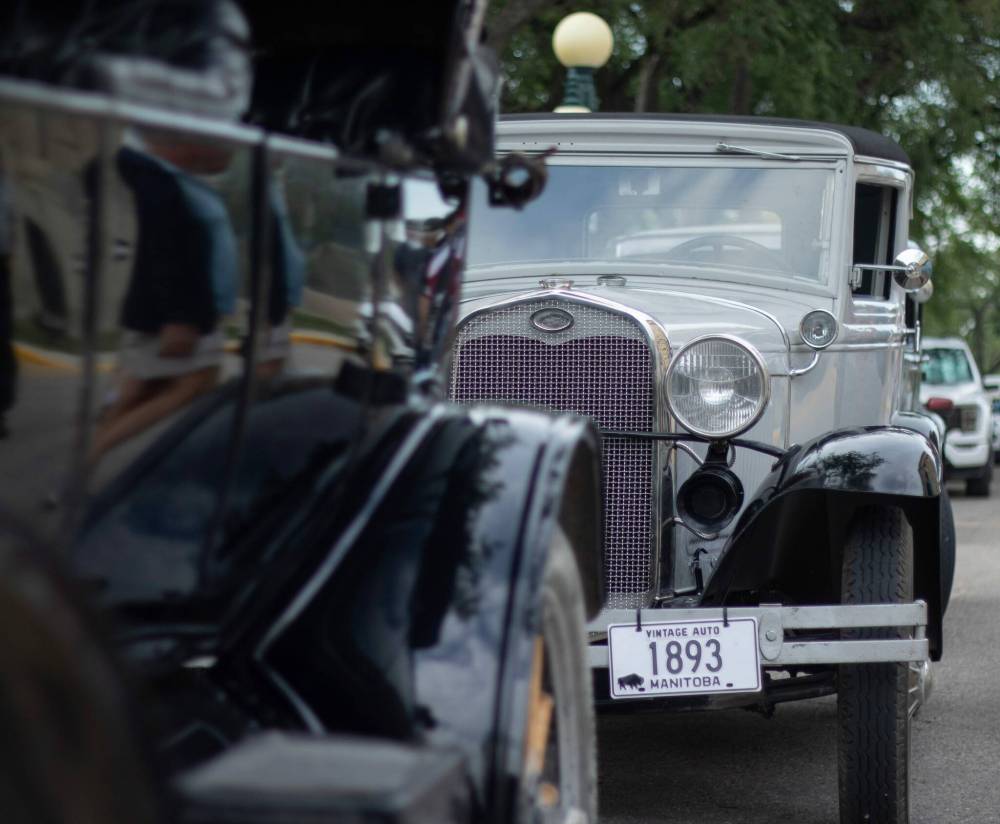Are we there yet?
Vintage cars hit old Trans-Canada in Manitoba road trip
Advertisement
Read this article for free:
or
Already have an account? Log in here »
To continue reading, please subscribe:
Monthly Digital Subscription
$0 for the first 4 weeks*
- Enjoy unlimited reading on winnipegfreepress.com
- Read the E-Edition, our digital replica newspaper
- Access News Break, our award-winning app
- Play interactive puzzles
*No charge for 4 weeks then price increases to the regular rate of $19.00 plus GST every four weeks. Offer available to new and qualified returning subscribers only. Cancel any time.
Monthly Digital Subscription
$4.75/week*
- Enjoy unlimited reading on winnipegfreepress.com
- Read the E-Edition, our digital replica newspaper
- Access News Break, our award-winning app
- Play interactive puzzles
*Billed as $19 plus GST every four weeks. Cancel any time.
To continue reading, please subscribe:
Add Free Press access to your Brandon Sun subscription for only an additional
$1 for the first 4 weeks*
*Your next subscription payment will increase by $1.00 and you will be charged $16.99 plus GST for four weeks. After four weeks, your payment will increase to $23.99 plus GST every four weeks.
Read unlimited articles for free today:
or
Already have an account? Log in here »
Hey there, time traveller!
This article was published 03/07/2023 (882 days ago), so information in it may no longer be current.
Putting the pedal to the metal would give a 1923 Ford Model T a top speed of 45 miles per hour — but that would be pushing it.
So, what would normally be a one-day journey across Manitoba — from Ontario to Saskatchewan borders — will take three days for a troupe of five vintage cars that began a fundraising journey Monday.
The Pine to Prairie Relic Run started at the 1932 Trans-Canada Highway monument near the Ontario border and will wrap up near Elkhorn, by the Saskatchewan border.

Mike Thiessen / Winnipeg Free Press
From left: David Allinson, David Rourke, John Olver, and Kane Gerbin. Five antique cars are travelling from the Ontario border to the Saskatchewan border as part of the Pine to Prairie Relic Run.
Historian Gordon Goldsborough, who organized the event, said the idea came to him as he talked to his friend.
“I have a friend who has a 1923 Ford Model T and we were chit-chatting about a year ago. I said, ‘Wouldn’t it be cool to go out on a drive somewhere?’” Goldsborough said. “’I’ve been researching some of the old highways of Manitoba, from when your car was new. Why don’t we try driving down some of those old highways, like the Trans-Canada?’ It kind of snowballed from there.”
The length of the trip is 545 kilometres and although modern cars could drive it in one day, the vintage ones can’t. Due to their age, moreover, the cars may have to go even slower, possibly as low as 30 kms per hour.
Additionally, the roads that made up the original Trans-Canada Highway are largely disused. Some are made of dirt and others have cracked pavement, making the journey potentially even more hazardous.
Part of the inspiration for the trek is finding out if the old cars have the mettle to make it.
A huge boulder marks the original Trans-Canada at the Manitoba-Ontario border. The highway was built by men who had been hired by the government during the Great Depression in the 1930s. The highway ran 145 miles from Portage and Main to Kenora.
Goldsborough explained that donations to the fundraiser will pay for maintenance of the tree-planting train car, which is part of the collection at the Manitoba Agricultural Museum in Austin. The car needs a ceiling installed to protect it from the elements.

Mike Thiessen / Winnipeg Free Press
The length of the trip is 545 kilometres and although modern cars could drive it in one day, the vintage ones can’t. Due to their age, the cars may have to go even slower, possibly as low as 30 km per hour.
The train car was used to plant shelter belts across the Prairies from 1920 to 1973. The clusters of trees protected farms from erosion due to wind and drought. It traversed the Prairies as kind of a mobile classroom to teach children and adults about tree-planting.
In 1973, it was donated to the Manitoba Forestry Association and taken to the Forest Discovery Centre in the Sandilands. When the centre closed last year, the train car was donated to the Austin museum.
“Millions of trees across the Prairies owe their existence to the tree-planting car,” Goldsborough said.
David Rourke, a PhD candidate in the geography department at the University of Manitoba, is driving a 1928 Model A in the fundraiser. He has a longstanding interest in both environmental issues and classic cars. His grandfather had worked at a Ford assembly factory in Winnipeg.
Rourke’s father-in-law, David Allinson, a 92-year-old retired farmer, will be the oldest participant, driving a 1931 Ford Model A and will be assisted in the journey by Rourke’s son-in-law, John Oliver.
Following the three on the journey will be Rourke’s wife Diane Rourke, his daughter Dorian Oliver and his granddaughter Stella Oliver. The former two will drive the family truck, which will have a trailer attached.
“All four generations will be participating in the journey,” Rourke said.

Mike Thiessen / Winnipeg Free Press
David Allinson, a 92-year-old retired farmer, will be the oldest participant, driving a 1931 Ford Model A.
Donors will be entered to win a framed, original 1926 Manitoba road map, which Goldsborough said is rare.
“I know of exactly two (such maps)…. At that time, 1926, the provincial road network was still very primitive. It was only around that time, in 1926-1928 that the system we call provincial trunk highways, those are the main numbered highways, didn’t get started until (then)… It was the very beginning of Manitoba’s highways.”
Donations to the Pine to Prairie Relic Run can be made here.
graham.mcdonald@freepress.mb.ca


